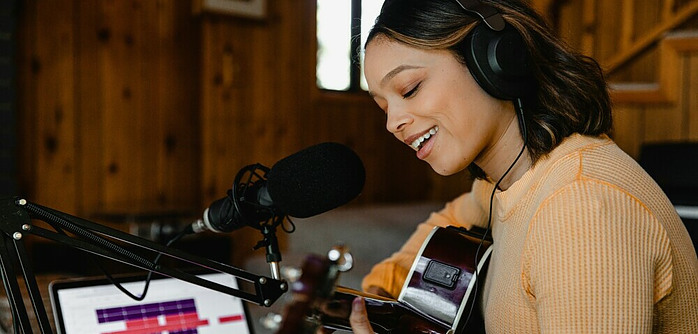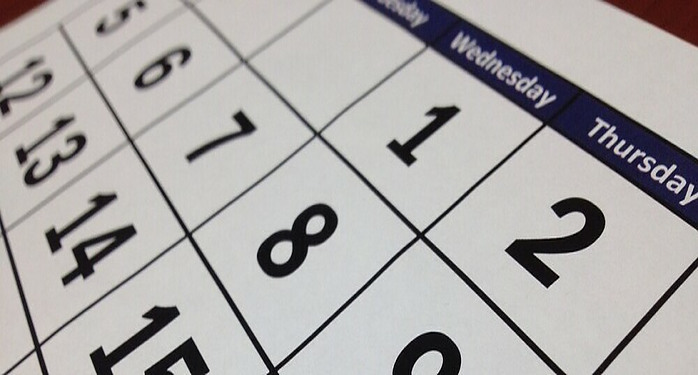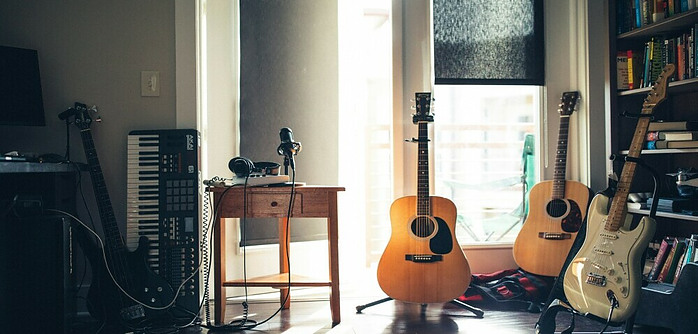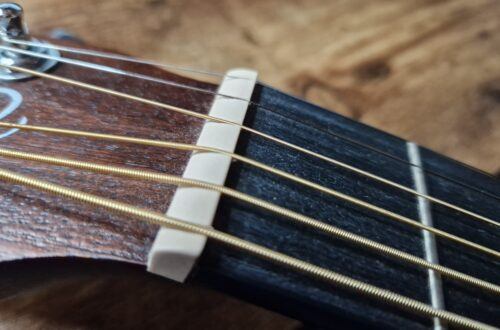
Daily Guitar Practice Made Easy, Practical Tips For Beginners
I’m going to kick things off by highlighting the undeniable importance of daily practice for anyone embarking on their guitar-playing journey.
Now, this isn’t just about strumming a few chords or playing your favourite riff over and over; it’s about intentionally dedicating time each day to hone your skills which I assume is the exact reason you are here.
You’re going to find out about how consistency not only builds muscle memory but also ingrains a deep musical intuition that can’t be rushed. Every time you pick up your guitar, you’re placing another brick in your pathway to proficiency.
Table of Contents
- Benefits of Daily Practice
- But What if I Can Not Practice Everyday?
- Building a Guitar Practice Routine
- Best Place & Time for Practice Sessions
- The Ideal Space to Learn
- Structuring Your Practice Schedule
- Breaking up your Routine
- Limited on Time?
- Tools Needed to Build a Practice Routine
- When Should you Change your Guitar Practice Routine?
- What to Do When You Are Bored With Your Routine?
- How to Make a Routine Challenging Relative to Your Experience
- Keeping Motivated
- A Chorus of Conclusion
Benefits of Daily Practice

Daily practice carves out a space for focused growth, allowing you to connect with your instrument on a level that occasional playing can’t match. By committing to a routine, you’ll witness a transformation in your playing that’s both visible to you and audible to anyone listening. Your fingers will begin to dance across the fretboard with a confidence that only comes from dedicated practice.
In my opinion, the benefits of this disciplined approach are immense. It accelerates your learning curve, makes complex techniques more approachable, and deepens your musical expression. And it’s not just about gaining speed or dexterity; it’s also about cultivating a love for the guitar that can become a lifelong companion.
But now for the Contradiction!!
But What if I Can Not Practice Everyday?

Now, although daily practice is something to strive for, I’m fully aware that most of us have other obligations to attend to in our busy lives and this can be off-putting for most of us. Nobody wants to hear that the only way to make playing the guitar worthwhile is to practice every waking hour, it’s just not practical for most of us.
This is a great method for people aiming to play in a band or just become an elite guitarist, but in most people’s reality including mine, time constraints do play a factor.
If you are anything like me and just want to learn, play and enjoy guitar at your own pace, but still want to do it with the intent of progressing at the best of your time and ability, then I think you are in the right place.
Whats The Article Really About?
Throughout this article, I will be giving tips that have helped me with my guitar practice and taken some of the time burden off of my back and allowed me to enjoy the journey so far.
These tips will not only be practical tips you can follow but also tips that hopefully help with your mindset when it comes to learning the guitar and having the right routine that suits your lifestyle.
I’m still on my guitar journey as I write this article, around 4 years deep, and I have ups and downs just like anyone else.
Along the learning path, I have found ways to get around certain obstacles, whether it be the physical side of playing the guitar or the mental side of things. So, as we pass through I will let you in on the thought process that ultimately led to me writing this article.
As we smoothly transition into the next section, remember that building your practice routine is about creating a solid foundation that will support your musical aspirations for years to come.
Building a Guitar Practice Routine

Now, how do you sculpt this blueprint? Begin by carving out as much time as possible, ideally each day if you can, for your practice. Consistency breeds progress, and progress is what we’re after.
Next, establish a practice routine that covers a variety of fundamental areas – technical exercises, chord practices, and maybe a sprinkle of music theory. Choose something that resonates with you, something that will keep you coming back for more.
Remember, your first attempt at establishing a practice routine doesn’t need to be your last. You can always adjust your approach down the road. Above all, this structured practice should feel personal to you, tailored to your unique journey with the guitar.
Building this foundation isn’t just about the notes you play today; it’s about all the music that’s yet to come from your hands.
Best Place & Time for Practice Sessions

Choosing The Right Time and Place
Choosing a suitable time for practice isn’t about simply finding an empty slot in your schedule; it’s about identifying when you’re at your mental and physical peak.
Are you a morning person whose day is energized by the dawn chorus, or do you find your groove when the evening settles in? Plan your practice when you’re alert, receptive, and least likely to be interrupted.
In a perfect world, the optimal setting for guitar practice would be a quiet haven tucked away in the confines of an office or bedroom. This is my preferred ideal scenario, and whenever time is on my side, I commit to 1 hour each day in my sanctuary for practice and more time when I have it available.
However, reality often paints a different picture as most of us find ourselves entangled in hectic schedules, making the notion of dedicating specific times for daily guitar practice seem like an uphill task. This is where a touch of creativity and resourcefulness becomes paramount.
During the hustle and bustle of work and other priorities, I’ve learned to employ a bit of my initiative to ensure my guitar practice remains a non-negotiable part of my routine.
Here, I share some savvy strategies that have proven effective in squeezing in quality practice, regardless of the constraints life throws my way.
1. Morning Coffee Session
– Start your day with a short guitar practice while enjoying your morning coffee.
– A few minutes of practice can set a positive tone for the day.
2. Lunch Break Strumming
– Utilize your lunch break for a quick guitar session if you work from home.
– It can serve as a refreshing break from work or other daily activities.
3. TV Time Tune-Up
– Incorporate guitar practice during commercial breaks or while watching TV.
– Use this time to focus on specific exercises without disrupting your favourite shows.
4. Kitchen Serenade
– While waiting for food to cook or water to boil, strum a few chords or practice a short melody.
– It turns kitchen downtime into a musical opportunity.
5. Post-Dinner Relaxation
– Wind down after dinner with a calming guitar session.
– Playing acoustic tunes can be a peaceful way to transition to the evening.
6. 30 mins Before Bed
– End your day with a short acoustic session as a way to relax before bedtime.
– Focus on gentle strumming or fingerpicking for a calming effect.
7. Weekend Morning Routine
– Dedicate a portion of weekend mornings to more extended guitar practice sessions.
– It allows for deeper exploration of techniques and learning new songs.
Remember, the key is to find pockets of time in your daily life where you can integrate guitar practice seamlessly. Making it a part of your routine in creative and enjoyable ways can make practising more sustainable and enjoyable.
Feel free to break up the practice into 5 or 10-minute segments throughout your day, utilising some of the above recommendations that fit nicely around your schedule.
The Ideal Space to Learn

The importance of a quiet and comfortable environment can’t be understated. A space where distractions are minimized will keep the focus on your fretwork. Whether it’s a dedicated music room or a corner of your bedroom, this space should invite you to play, not impede progress.
Now, you might be wondering if your practice spot matters. Guess what? It does. Natural light can elevate your mood, a comfortable chair keeps the backaches at bay, and a well-organized space can inspire practice. This doesn’t need to be perfect – just conducive to focus and creativity.
Once you’ve established the ‘where’ and ‘when,’ you’re ready to dive into the ‘what’ and ‘how.’ This brings us to our next section, where I’m going to show you exactly how to craft a practice schedule that is as unique as you are.
We’ll talk about breaking down your practice time effectively and ensuring that every session moves you a step closer to your goals. Stay tuned.
Structuring Your Practice Schedule

Because I know that the majority of us will not always have all day to sit and practice, I will be using a 1 hour time window, per day, for practice as a general rule of thumb, but I appreciate that our days may not look the same, so feel free to build your routine with the time you have.
Please do not think that if you do not practice every waking hour it is pointless to even try. The idea is to have focus and intent when playing even if it’s only for a short while each day. Every 5 minutes you spend on the guitar is one step in the right direction.
I think most of us will be able to carve out 1 hour in our day to practice whether that be split up into 10-minute time slots or 1 consistent hour. Believe it or not, I have still made steady progress by practising just 30 minutes a day when my schedule is full.
Breaking up your Routine
First up, you want to think about dividing your practice into distinct sections, sort of like breaking down your session into smaller, digestible parts. This tactic isn’t just easy to manage; it’s also incredibly efficient. It can help prevent burnout and keep each practice session fresh and exciting.
Here’s a glimpse into how my guitar practice has looked like in the past:
10 minutes: Warm-Up
Dive into the A minor Pentatonic scale with a backing track. Not only does this serve as a warm-up, enhancing finger dexterity and coordination, but it also lays the groundwork for improvisation skills down the line. It’s like hitting two birds with one stone by incorporating scales into the warm-up routine.
25 minutes: Licks, Riffs, and Chord Switches
Allocate time to conquer challenging areas, such as the transition from C major to D major. Initially, this switch posed a formidable challenge, so I dedicated time to perfecting it. Additionally, I would mix in a medley of open chords—A, C, D, E, and G—in a random progression to refine my switching speed.
25 minutes: Song Practice
Delve into familiar songs to elevate their quality. When tackling new songs, I invest a dedicated 1 hour every other day to learn them thoroughly. Once acquired, these songs would join my routine as a 10-minute practice interval, where I strive to perfect them alongside a few others.
This structured approach allows me to balance my love for playing songs with the necessity of honing challenging techniques, ensuring a well-rounded and progressive guitar practice routine.
The magic isn’t in the tools you use but in the thoughtfulness and intention you put into customizing a routine that aligns with your musical goals and capabilities.
Feel free to add what you like to your routine, The above is just an example of how I normally plan my routines but like I have already mentioned, there is no harm in moving things around so it’s tailored specifically to you.
Simple Open Guitar Chords For Every Beginner
Limited on Time?

Now, segmentation is the strategy I like to leverage. It’s flexible. So if you’ve only got 30 minutes to spare, shorten each segment proportionally. This approach ensures you touch on all critical aspects of play, even on tighter days.
Undoubtedly, there will be days when time is a scarce commodity or, on occasion, when practising seems impossible. During these moments, it’s crucial not to succumb to stress.
I’ve personally experienced several instances where I had to take multiple days off or more, from my routine, only to return days later feeling, arguably, better than before.
In my perspective, there are discernible short-term advantages in taking a step back momentarily, allowing for a reset, and then diving back into the practice routine. .
It’s a testament to the idea that a brief hiatus, rather than being detrimental, can, in fact, contribute positively to your overall progress and performance.
Tools Needed to Build a Practice Routine

Now, you might be anticipating a high-tech app recommendation from me to streamline your practice routine, but truthfully, you don’t need to make any purchases. A humble piece of paper or a sticky note paired with a pen will more than suffice.
The essence of crafting an effective practice routine lies in incorporating specific elements of guitar playing that pose a challenge for you, all while indulging in the songs you love and are genuinely eager to master. In other words just pick up the guitar and play.
Admittedly, following a routine can be a bit challenging for me personally, as my inclination leans toward just practising actual songs above everything else. However, the reality is that to maximize the benefits of my guitar playing within the limited time available, it’s essential to tackle the aspects that prove to be the most demanding.
When Should you Change your Guitar Practice Routine?

If I were to prescribe a timeframe for shaking up your routine, I’d recommend sticking with a particular routine for about three weeks. This duration allows ample time for substantial progress in refining those challenging elements that may be holding you back.
In instances where certain areas still require attention, simply keep them in your routine and introduce variations to other components. This adaptable approach ensures that you consistently address specific challenges while infusing freshness into your practice sessions.
The goal is to prevent routine monotony (boredom), a pitfall I’ve encountered in the past, which can transform the enjoyable pursuit of playing guitar into a mundane chore.
What to Do When You Are Bored With Your Routine?

In the unfortunate circumstance that boredom creeps into your practice routine, a straightforward solution exists. Whenever I find myself in this situation, I take a week to immerse myself in playing songs I already know and focusing on a song I’m eager to master.
During this period, I am, in essence, still practising and honing the very skill we all aspire to perfect – playing songs. Engaging in song practice not only reignites the spark of enthusiasm but also ensures continuous improvement.
Subconsciously, you acquire new skills because songs inherently have all the elements you are likely learning: chord changes, riffs, hammer-ons, pull-offs, and other subtle nuances that contribute to a song sounding pleasing to the ear. This is how I justify the odd few weeks here and there of just playing songs.
The aim of the game is to prioritize what keeps you genuinely engaged. As you’re probably well aware, the journey of learning to play the guitar is a lengthy one. Therefore, the key is to tailor your approach to ensure sustained interest and enthusiasm.
How to Make a Routine Challenging Relative to Your Experience

We’ve touched on this topic briefly, but this section looks deeper into what, in my opinion, should be avoided.
Be Realistic
Four years ago, when I embarked on my guitar journey, I would spend countless hours on YouTube searching for songs that I liked, often selecting tunes that were a tad beyond my current playing ability. This became apparent to me once I decided to start guitar lessons with an in-person tutor over a year ago.
Now, don’t get me wrong – learning a challenging song can be beneficial. However, there’s a delicate balance between choosing songs that are realistically attainable and those that might be somewhat out of reach considering your current skill level and available time.
During the initial years, I’d take a deep dive into intricate fingerstyle songs with technical complexities, investing months just to memorize a single piece before even starting the perfection process.
As the years rolled by, it became evident that, although this approach granted me a personal edge in fingerstyle guitar playing, neglecting practice on fundamentals and other aspects might not have been the wisest choice.
With all that in mind, it’s crucial to structure your routine in a way that aligns with the kind of guitar player you aspire to be. Add elements that are challenging but not beyond reach. This strategic approach not only prevents boredom and self-doubt but also keeps you motivated to consistently progress.
What about Music Theory?

Music theory was an aspect I underestimated for quite some time. While I won’t claim that music theory is my primary focus in learning the guitar, incorporating it into my routine became an essential element.
Typically, I would set aside time on weekends to look into theory, either through YouTube videos or, for a more structured approach, I enrolled in Justin Guitar’s Practical Music Theory Course, complemented by Marty Guitar’s Beginner Barre Chord lessons.
I opted for these courses because I’m a hands-on learner, and integrating theory while playing is crucial for my understanding. The noteworthy aspect here is that both recommendations are FREE to enrol in, making it a cost-free entry into the realm of music theory.
For those at the initial stages of their guitar journey, I highly recommend Marty Guitar’s Barre Chords course. It provided me with valuable insights into how the guitar neck functions, proving to be a pivotal resource for understanding more about how the guitar works and the theory behind it. It’s brilliant to dip your feet into the world of guitar theory as a beginner.
Keeping Motivated

Finding Motivation can sometimes be tough, but by keeping track of your wins, no matter how small, you build a ladder of progress that’s uniquely yours.
When it comes to enhancing your sessions, don’t shy away from the vast array of digital resources at your fingertips. They can be game-changers in breaking monotony and bringing a new edge to your practice.
Of course, you’ll hit a few snags along the way. But don’t worry too much about those. Challenges are simply stepping stones that lead to greater mastery when approached with the right mindset and equipped with problem-solving strategies.
A Chorus of Conclusion
Hopefully, by now, you have a clearer understanding of why a committed approach is crucial. Creating that musical haven where time stands still while you strum away is important, along with carving out time where possible, and crafting a solid, balanced practice schedule further sets the stage for you to become better over time.
Remember, balancing technical drills with the joy of playing songs keeps the learning vibrant and diverse, ensuring that your practice sessions resonate with progress and personal satisfaction
While it’s crucial to start your sessions with physical and mental warm-ups, setting achievable goals ensures you’re always striding towards a tangible target.
So there you have it. Embrace these insights and let them guide your daily strumming sessions. And remember, your first attempt doesn’t need to be your last.
Guitar mastery isn’t a sprint; it’s a marathon punctuated with grace notes and fortissimos of self-discovery and improvement. Let’s keep the rhythm alive, and who knows? You might just surprise yourself with how far you can go. Thank you for reading.
martin@chordexplorer.com





